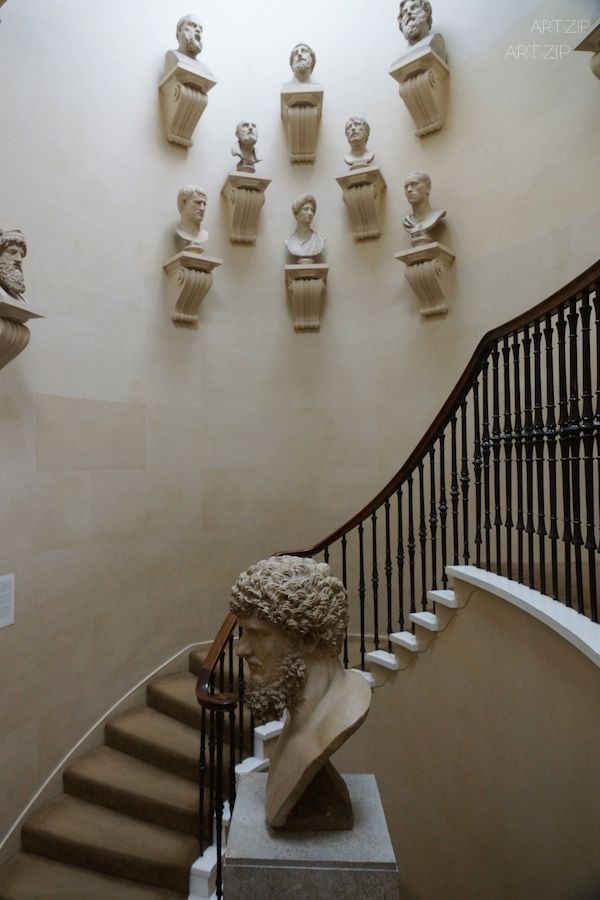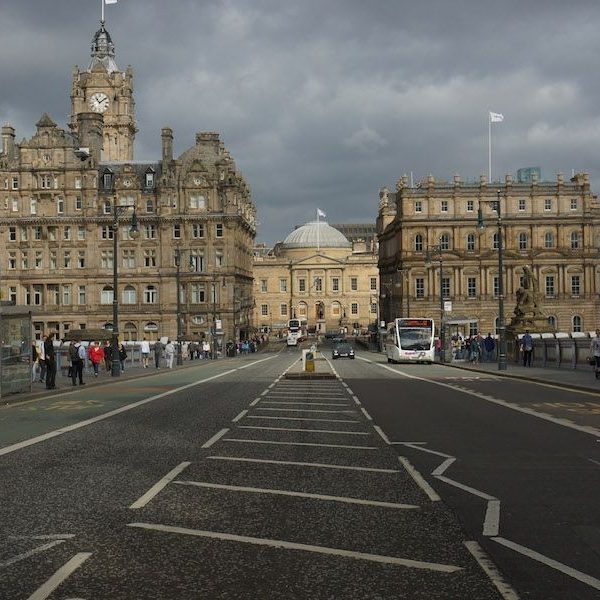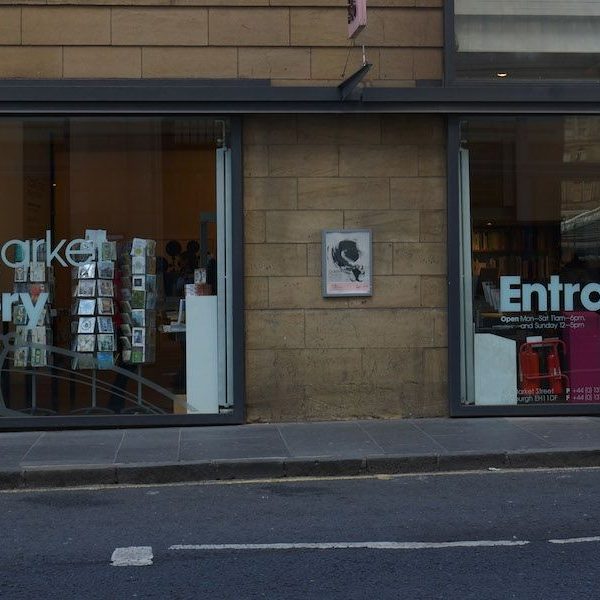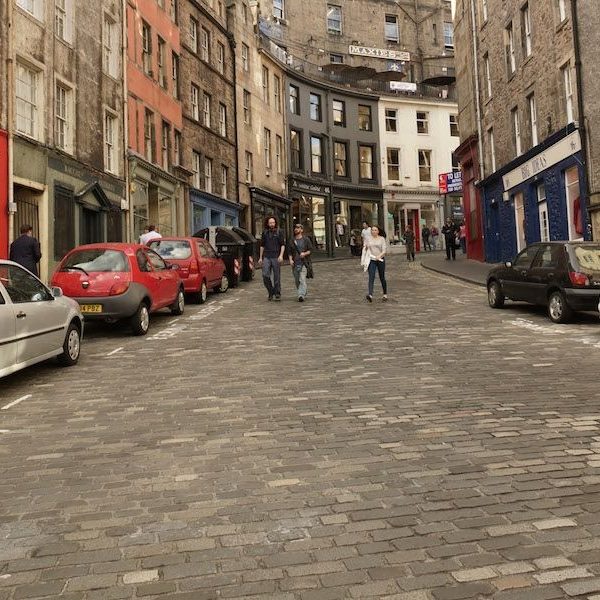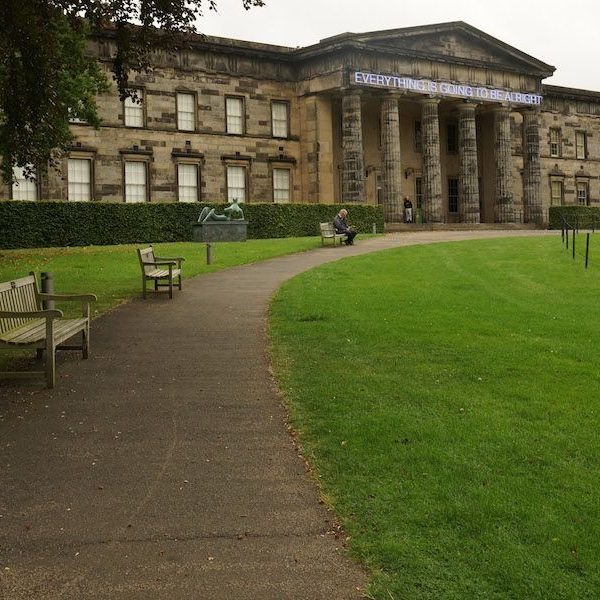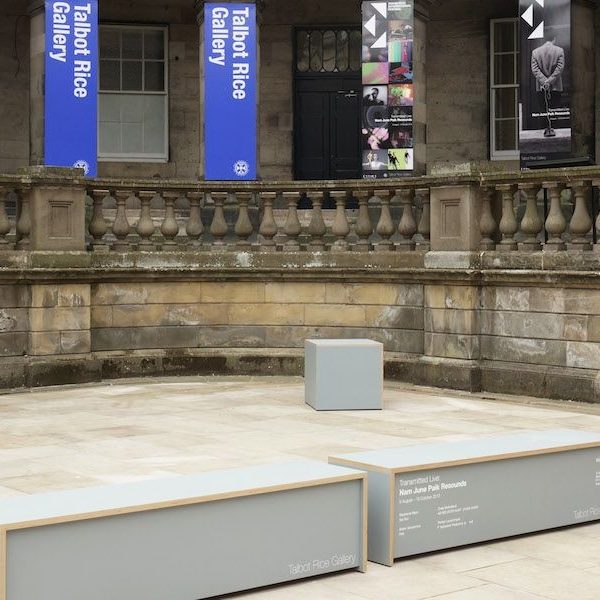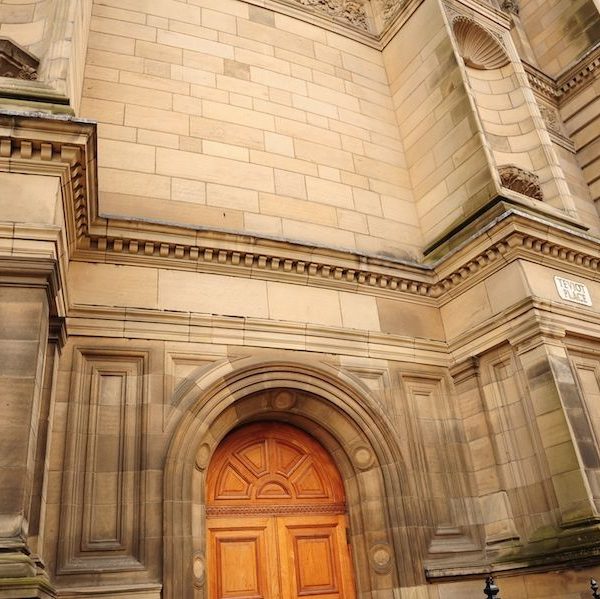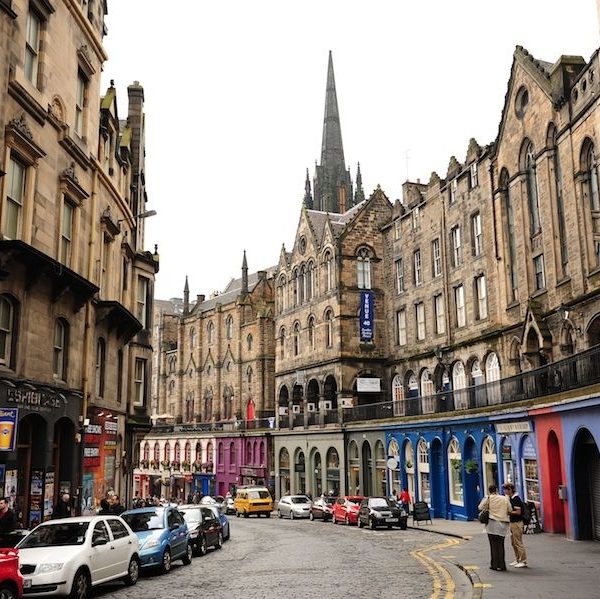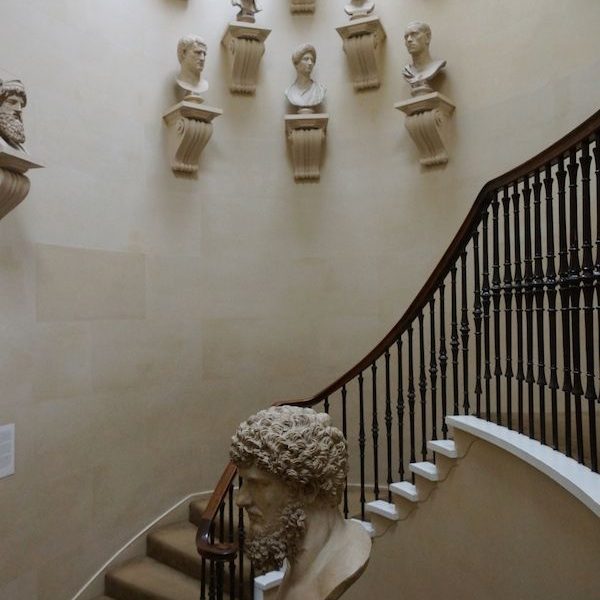
Interview with Neil Mulholland
Programme Director of MA/MFA Contemporary Art Photography
Associate Head School of Art / Head of Postgraduate/Context
Edinburgh College of Art The University of Edinburgh
愛丁堡藝術學院當代藝術攝影碩士/純藝碩士課程主任
愛丁堡藝術學院藝術學系副主任
專訪尼爾·穆赫蘭道教授
Text by: Funky He
撰文:何伊寧
.
The Contemporary Art Photography programme at Edinburg College of Art (ECA) primarily enables students to use lens-based media to examine and explore themes of their own choosing and to produce a resolved body of work allied to rigorous research and professional practice. ECA Students consistently demonstrate exceptional levels of achievement across an impressive range of practice including Landscape, Documentary, Portraiture, Still Life, Video. Whatever the approach, it is undertaken within contemporary contexts allied to historical/cultural awareness of the medium in the context of contemporary art practice and underpinned by academic rigour.
愛丁堡藝術學院當代藝術攝影課程力求讓學生通過使用鏡頭的媒體去考察並探索他們自己所選擇的題材,並制作出具有活力的研究和專業的作品。愛丁堡藝術大學的學生們在一直以來都在如景觀攝影、紀實攝影、肖像、靜物攝影或錄像中展現出非凡的水平。無論選擇何種攝影方式,這門課程都是與攝影在當代藝術實踐的歷史和文化認知背景下展開討論的,並以學術的嚴謹性作為支撐。
,
ART.ZIP: Can you tell us about the Contemporary Art Photography course at the Edinburgh College of Art as a whole?
NM: Photography at the Edinburgh College of Art used to be a design course – not long ago – it was in the design school, but it has held a visual communication perspective for a long time. It sat inside animation, film and television and so was in that kind of design/photography niche, but the staff had always been fine art photographers. Undergraduate photography in that sense was very broad and it combined a fine art sensibility with a design photography technical ability. The programmes at ECA are kind of mixture whilst Glasgow School of Art, for example, has two programmes that are completely separate. The course here is more or less dominated by a fine art approach and recently we have moved over to the School of Art from the School of Design.
Photography students here all have studio space which they share with others. It is all about what kind of work they are making. Many of our photography students don’t need a lot of space as they spend a lot of time out – off site – or in the dark room. They don’t necessarily sit in the studio, but some of them take the opportunity to use the space they have and to use the facilities that the art school has. So they may spend time learning how to cast or they may do a lot of video, digital work, web work and electronic, that kind of thing. So it all depends on what their interest is, perhaps aside of a conventional lens based approach to making their work. But there is usually something that draws them back towards lens based practice. Take one of our students who graduated last year for example. She worked for a few years on lenses specifically, and collaborated with staff and students in the glass department to make lenses. Then she used the lenses to create photographs.
ART.ZIP: 您能就愛丁堡藝術學院的當代藝術攝影專業給我們一個大致的介紹嗎?
NM: 一直以來,愛丁堡藝術學院的攝影專業中都被劃分在設計院系當中。雖然攝影被設置為實用設計專業,但卻從很早之前便開始往視覺傳媒的方向發展;同時,我們在傳統意義上將攝影和動畫、電影和電視視為同一個門類,但其授課老師卻一直都是藝術攝影的實踐者。愛丁堡藝術學院攝影本科專業所涉及的內容相當廣泛,它既享用了實用攝影的技術設施,同時也包含在藝術的語境當中。相較格拉斯哥藝術學院來說,愛丁堡的本科課程將上述的教學內容合二為一,而不是在傳統的意義上分設兩個專業。
然而正是因為我們在攝影課程中或多或少地采用了當代藝術的教學方式,因而不久前則將它從設計學院劃分到藝術學院中來。同研究生課程的整體性而言,愛丁堡藝術學院的攝影本科專業是一個非常寬泛的課程,其內容涉及到繪畫、雕塑和媒體等各個領域。攝影本科的課程不單包括上面所提到造型學科,同時還有涵蓋了攝影理論的學習。這樣,我們的學生們都能夠共享工作室中的所有資源。所有攝影專業的學生都在一個樓裡學習,並分配有共享的影棚,而據我了解,很多學校是沒有影棚專門提供給攝影系學生的。不過這也要取決於學生選擇創作何種類型的作品,我們很多學生大部分時間都在外拍,或者花上大把的時間在暗房中。這樣的學生沒有必要成天待在影棚裡工作,但另外一些學生則選擇利用這所藝術學院內所提供的影棚和其他設施進行創作。在攝影創作之外,學生可能會學習如何做雕塑、或是嘗試制作視頻、或與數碼、網絡或電子類相關的實踐。不過這統統取決於學生們的個人興趣所在,但是都和鏡頭有一定的聯系。舉個例子來說,我們上一屆畢業的一位學生花了幾年時間研究與相機鏡頭相關的領域,她的畢業創作便是同玻璃工藝專業的老師和學生一起合作完成的,然後她再用這些鏡頭創作作品。
ART.ZIP: I have noticed that many young students are crazy about analogue photography? Are there any specific areas that your students are interested in?
NM: They are interested in hypo-technology in that sense, which is combined with a broader interest in new media. A lot of recent photography students have been drawn to look at lenses, or students have become fascinated with analogue equipment that is difficult to get your hands on. We found quite a lot of students who come over from America are interested in American vernacular photography. They start off investigating vernacular photography but very quickly that spreads into something broader which develops out of that interest in vernacular types of practice.
It is interesting because historically it is a kind of mechanised media but increasingly these days professional photographers use digital cameras, so it’s almost like that has created a space for people to double or re-engage with something more mechanical. That needn’t necessarily just be the use of large format or conventional dark room technology but they are kind of looking at things that are proto-photographic or things which sit alongside photographic technologies.
ART.ZIP: 據我的觀察,如今有很多攝影系學生都熱衷於運用傳統的膠片進行創作,愛丁堡藝術學院的學生是否也有類似的偏好?
NM: 我們的學生中有很多都對低技攝影(傳統膠片攝影)有著特殊的愛好,同時亦對新媒體也抱有廣泛的興趣。目前我們的學生中很多人都對鏡頭,或對那些通常不容易上手的傳統膠片器材有著相當的喜好。另外,我們也發現很多來自美國的學生都對美國街頭攝影有著深厚的情感,他們也將這一興趣慢慢拓展到其他的實踐中去。
街頭攝影是一個很有趣的攝影類型,很多專業攝影師都開始放棄傳統機械相機轉而使用數碼相機去拍攝,所以年輕人便利用這個空間去嘗試機械相機,但並不意味著他們必須要用大畫幅相機或使用常規的暗房技術。
.
ART.ZIP: What is the competitive edge of MA/MFA course at ECA? And what makes you most proud of it?
NM: To some extend, I think all Masters Photography courses in Europe are same, in a lot ways. They sort of need to be part of a European critical framework or something like that. There is international debate and discourse surrounding contemporary art and photography that they need to conform to. We don’t necessarily focus on differences but on what makes us alike.
We are in the art school, which was until recently an independent art school and therefore it has that tradition which is connected to a workshop model. So the way our students are taught is coming from that kind of educational inheritance.
Having joined the University of Edinburgh, we found ourselves part of a gigantic College of Humanities and Social Sciences, which has incredible range of expertise. The photography students here can draw on the other fine art or design areas (glass, sculpture, film and TV, textiles), or whatever they think may be useful in their work. They are also able to access all of the workshops that take place in the College of Humanities and Social Sciences, so there are actually thousands of lectures taking place every week.
Students also can identify various support mechanisms for something that they may be interested in, theoretically speaking; and they can work directly with experts as well. Also, there is a lot of room for cross-over into sciences and medicines department. For example, our MFA students did an exhibition at the end of 2012 with the Roslin Institute. The work was produced in collaboration with scientists who worked in the institution and then exhibited there. They brought some of the work permanently as part of the new Roslin Institute just outside Edinburgh. So, there is this kind of possibility to work with the huge University of Edinburgh on of all sorts of projects.
The last aspect is that Photography exists as a Fine Art programme and that programme includes theory and curating. Students who specialise in these areas also inhabit the same studio. You may see some institutions where humanity and theoretical areas are quite often separated academically. But students here at ECA share the same spaces, the same courses and often, the same assignments. For example, our first year students have a large exhibition at the Talbot Rice Gallery, which was both a curatorial project and exhibition opportunity for them. They do a lot of collaboration with the curating students and all of them were involved. And they also work with other Master students from other MFA programmes in Europe. So this year, they are going to work with some students in Leeds and others from Ghent.
There is a sort of emphasis on collaboration between students to produce projects and exhibitions, and that is something they need to learn. If they don’t learn to work independently and socially, I would say, in Scotland there are no other options, where we don’t have primary art market. In Scotland, art students have to learn how to represent themselves and be self-organised. So developing connections with self-organised projects and spaces in Edinburgh is particularly important. MC Gallery for example, delivers all the professional practice components of the programme for the students that exhibit work there. The work on the project for MC takes place usually in late May every year. A strong sense of what we are trying to do is to involve our students from the beginning with the independent art scene in Scotland. So when they graduate from art school they have already become part of the art scene. Most of the people involved with those organisations did the MFA as well, so it gives a sense of moving from one platform to the next. We can see that is a certain kind of economy that exists in Scotland which is specific to a small country and that may be differently from Frankfurt or London.
ART.ZIP: 愛丁堡藝術學院當代藝術攝影的碩士(MA)和純藝(MFA)課程的獨特之處在哪?最令您驕傲的地方又在何處?
NM: 從一定程度上來說,我相信歐洲所有攝影碩士課程都有著極其相似的地方,其課程都是在歐洲學分框架之下所設置的,這便意味著這些課程必須符合國際上有關當代藝術和攝影話語的討論。因而我們更看重的是課程同該標準的相似度,而不是其獨特之處,所以我們並不強調它同其他院校攝影課程的區別。這裡一直以來都是一個單獨的藝術學院,直到最近才並入愛丁堡大學,所以我們依舊遵循的是傳統藝術院校工作坊的教學方式,而我們教授給學生也是延續了藝術院校的那一套。
自從合並入愛丁堡大學以來,曾經的藝術學院便成為了人文與社科學院這個巨大體系的一部分,後者更擁有著令人難以置信的專業知識。攝影系的學生同樣可以接觸到其他造型或設計範疇的課程,比如說玻璃工藝、雕塑、電影、電視及紡織等,或者更多可以應用到學生實踐中的學科。我們的學生亦可以參與到人文與社科學院所有的工作坊,以及每周數不勝數的講座。
除了上面提到的以外,攝影系學生還可以在他們感興趣的領域裡得不同程度的幫助,理論上說,他們甚至可以直接和相關專家們一起合作。比如說在2012年年底,我們攝影純藝專業的學生同愛丁堡醫學院(羅斯林學院Roslin Institute)的科研工作者們共同完成了一場展覽,醫學院還購買了部分學生的參展作品並收藏在遷址愛丁堡城外的新校區內。所以說,學院在並入愛丁堡大學之後也意味著我們學生能獲得更多元的機會。
最後,作為純藝專業的攝影課程設置中包括了藝術理論和策展部分的學習,因而無論偏向理論還是攝影實踐的學生都共享同一個工作空間。你或許會發現很多學院都在學術上都把人文和理論領域分的很開,然而愛丁堡藝術學院的學生則共享同一個空間,學習相同的課程,甚至完成同樣的作業。比方說我們一年級的學生每年都會在愛丁堡大學塔爾伯特·萊斯畫廊(Talbot Rice Gallery)舉行一次大規模的展覽,因而這次展覽對學生來說即是一個展覽,亦是一次策展項目,均由攝影實踐方向和策展方向的學生們共同合作完成。我們的學生還常常同歐洲其他專業的純藝學生進行一些合作項目,比如今年將於來自英格蘭利茲以及比利時根特藝術院校的學生展開合作交流。
我們的專業十分強調學生們在實踐和展覽中的合作,這些工作並不是一個人就能完成的,因而合作成為他們所必須要掌握的領域。我想說的是,在攝影藝術還沒有形成初級市場的蘇格蘭,學生們並沒有其他的選擇。在這裡,藝術專業學生必須學習如何表達自己,並學會自我組織。因此,在愛丁堡,學生學會自我發起藝術項目並同畫廊互動尤為重要,比如在每年五月下旬在MC畫廊(MC Gallery)的展覽便是學生展示專業水平的絕佳例子。另外我們希望在一開始就能帶領學生走進蘇格蘭獨立的藝術界,我們希望他們從學院畢業時就已經成為圈子裡的一部分,這也為那些繼續攻讀純藝碩士學位的學生搭建了進入另一個階段的臺階。我們必須看到的是,蘇格蘭的特殊經濟環境導致愛丁堡藝術市場同其他城市不同,例如法蘭克福或倫敦。
ART.ZIP: It is a common truth that learning theory and critical study are a very important part of studying photography? If so, what percentage of the MA/MFA photography programme at ECA is made up of theoretical study?
NM: We have two related courses that run each semester. One of them forms 40 credits, which is effectively the largest component. It focuses on practice and research that links to their artistic practice. It is difficult to say exactly how much is theoretical study and how much is practice; but it is really the development of how those two come together. Students are examined based on the research that they do, how they communicate, how they have developed a discourse, and what they have worked on with their peer group. So we assess how they communicate, how they respond to other’s work; we also assess the studentship and how they exhibit and distribute their work. Some cases are maybe the exception – a lot of students are not that straight forward, it may be more projects based or they may have published their work. It depends on what their practice is but these are the main things that we look at.
The smaller course is worth 20 credits. It is usually more theoretical, which means it’s based on seminars that students have to attend and they have to prepare the content for it. We ask them to read, reflect, visit or examine something and they have to come and present on that. That forms an educational experience itself and they will usually write a paper relating to that. These are more conventionally theoretical approaches but the nature of these courses change quickly. They become more blurred in the second semester when students hold an exhibition at Talbot Rice Gallery. They need to work collaboratively and they need to produce a publication that comes with the exhibition.
We also have a two year MFA course. At that level students have the choice to focus on what they expect of the programme and chose the most suitable programme for them. So either they do a degree show, or they read a body of art reading or they do something in-between. They can do a project and an accompanying report – something that is between a thesis and a degree show. Their choice, in a sense, is based on what they have tested out before they get to that point. Our degree shows are not conventional in that they include other possibilities that our students may have pursued.
The MA show which happens during the Edinburgh Festival is also connected with a bigger programme that the art college runs. So our students are part of a broad spectrum of events at the festival.
The nature of the kind of theory we pursue here is one of being experimental, philosophical and so on. We are really interested in visual culture, material culture and we are looking at the new aspects of theory that artists are drawn to at the moment. Then we move on to things are maybe more practical in orientation, like curatorial studies and curatorial practices. We also think about the engagement with organisational practice, which should become part of their work rather than something which is done to them. Our students will not wait for somebody to spot them or tell them how to sell. They need to learn how to do that by themselves; again you don’t have any other choices in Scotland. If you don’t do that, you don’t have a career, you don’t have anywhere to exhibit. You need to make opportunities. It is not commercial; it is different sort of climate here.
Rather than imagine that one day you will make work which earns you a big enough grant upon which to survive or that someone will pay a lot of money for your works, the importance is that you learn how to make good work with what you have. You need to become savvy about using all possible resources that you can gather. The best resource you have is your peers because they are the people who have time and energy.
ART.ZIP: 眾所周知,攝影理論和批評是攝影教育中非常重要的一部分,所以關於理論和批評在愛丁堡藝術學院碩士/純藝碩士攝影課程中大概占多大的比重?
NM: 我們每學期都會開設兩個相關的課程,其中一個占有四十個學分,屬於是課程設置中最大的組成部分。它側重於考察一個藝術項目的實踐和研究,然而我們很難說這其中究竟有多少是理論學習,又有多少是實踐部分,但是卻幫助學生將兩者合二為一。我們對學生的考察基於他們所做的研究,考察他們如何進行溝通,以及他們在與其他同學合作時所開發的話語權;我們同時考察學生如何回應其他人的作品,以及他們如何展示並宣傳自己的作品。但在一定的情況下也有特例,可能很多學生更偏向於攝影實踐或在雜誌上出版作品,雖然這一切都取決於每個學生各自的實踐,但上述的這些要點都是我們主要考察的內容。
而另一門占有二十學分的課程則會涉及到更多的理論學習,這門基於研討會形式的課程要求學生必須參加並提前做好準備。我們要求學生去閱讀,反思或審視一些課題,並將這些研究成果做成報告,並完成一份與之相關的論文。雖然上面提到的兩個課程都采用了比較傳統的理論教學方式,但課程的性質是不斷發生變化的,到了第二學期之後兩者間的界限就變得模糊起來。這學期學生會在塔爾伯特·萊斯畫廊為觀眾舉辦一場展覽,他們需要共同協力地去合作完成,並為展覽制作一本出版物。
另外,我們學院還有一個為期兩年的純藝碩士課程。因此,學生可以在這一階段選擇去全身心投入他們所期盼且更適合他們的實踐項目,他們既可以選擇做展覽,還可以撰寫論文,或是將兩者結合起來。學生還可以選擇做一個介於論文和畢業展之間的攝影項目,即附帶有紀錄項目進程報告的作品集。我們的畢業展相當開放,因此學生可以在此嘗試各種不同的可能。攝影碩士學生的畢業作品會在每年愛丁堡藝術節期間展覽,同時展覽也是藝術學院所組織大型活動的一部分,所以我們的學生亦成為藝術節上眾多活動的參與者之一。
我們一直對視覺文化及物質文化都抱有興趣,我們同時將目光轉向當下藝術家們所關注攝影理論的新方向。而且我們則更看重具有實踐性的方向,例如策展學習和策展實踐。我們也會去鼓勵學生參與到組織的實踐中,這其實是學生學習中的一部分,而不是別人應該為他們做的。我們的學生不會去一直等某個人去發現他/她,或告訴他/她如何去賣作品,他們要學會自己去承擔這些責任,因為身在蘇格蘭他們沒有更多的選擇。如果學生不這麽去做,他們便沒有工作,也找不到地方去展覽,他們必須自己去制造機會。在蘇格蘭的藝術生態並不是商業的,這裡是另一種氛圍。
我們的學生應該學會在現有的條件下去創作,而不是幻想有一天等你拿到一筆獎金或有人贊助時才去做作品。他們必須學會如何聚集手上的資源,而最好的資源便是那些擁有時間和能量的同學們。
ART.ZIP: What is your suggestion to students who want to study photography at Edinburgh College of Art?
NM: We do have a lot of people apply who seem to think they can come to the MA course to learn photography. I suppose ‘taught’ in the UK means you go to acquire a ‘Master of Skills’. I think it is just a different comprehension of what taught means. We are a postgraduate degree structure that has courses, assignments and certain assessment criteria which is different from a completely open-ended research degree. I think the first thing is to understand is the difference between these two approaches, and to understand that taught is probably not what you think it means.
I think what they need to do is come with a practice that is robust, and they want to develop and be really open-minded about completely taking it apart – almost starting it again. They need to be prepared to deconstruct what they do, to be open to work of others and also be open to constructive critique.
ART.ZIP: 您對那些打算申請愛丁堡藝術學院攝影學院的學生有哪些建議?
NM: 我們的確接受到很多碩士課程的申請。我猜想在英國學習碩士課程意味著你將會獲得碩士級別的技能。我覺得這是大家對教育意義的不同理解罷了。愛丁堡藝術學院的攝影專業將設置有不同課程、作業和若幹評估標準的研究生學位結構同一個完全開放式的研究學位區分開來。我認為學生首先應該理解的便是這兩者之間的區別,並懂得這裡所謂的教育或許並不是你所想的那樣。
我認為申請這門課程的學生應該帶著他們具有活力的項目而來,並帶著完全開放的態度去全盤否定它,從頭再來。學生們應該時刻準備著解構他們所做的實踐,並對其他人的作品有足夠開放的接受能力,並隨時準備接受那些建設性的批評。
.
About Neil Mulholland:
關於尼爾·穆赫蘭道:
Professor Neil Mulholland is Director of the Postgraduate Programme in Contemporary Art Practice, Theory, Painting, Sculpture and Photography at the School of Art. He is currently associate Head School of Art at Edinburgh College of Art.
尼爾·穆赫蘭道在藝術學院中負責並教授當代藝術實踐、理論、繪畫、雕塑以及攝影的研究生課程。他目前在愛丁堡藝術學院擔任藝術系的副主任。

